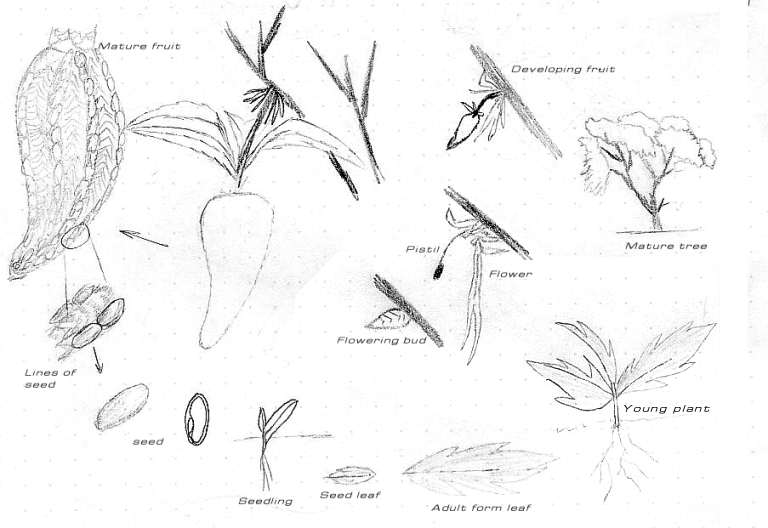

|
gADARREN AGRICULTURE: AKAO FRUIT |
 |
|
Akao fruit is one of the most important crops of tropical Gadarren agriculture, its almost metre long fruits are harvested annually at summer from tress often more than fifty metres tall, most often by trained Natara whose domestication by the Galen has provided them with a worker which will happily harvest the fruits from their most precarious positions. The Akao tree is a typical tropical forest tree which has become increasingly grown for its delicate perfumed fruit, however where as Earth’s apple trees have been tamed and cultivated to a manageable size, the domestication of the Natara has not forced the Galen to make concessions in size, and so these tall arching tress will stand prominent over the rooftops of Galen settlements. The fruits are typically when mature between 30-90cm long, but are only 15-20cm wide, though many distinct types of fruit are grown, there has been little in the way for cultivation, as the wild type trees are very satisfactory, and extremely abundant in fruit. A colour change from blanched white to a heavy cerise or purple marks the transition to ripeness, it is at this stage that the Natara can grasp and detach the fruit from the trees as the abscission plane also weakens at this time. The settlement’s group of Natara will then return the fruit to one of the communal altars where the fruit can the be processed. If the fruit become excessively ripe there tough leathery skins split and rich syrupy fluid will exude, though quite aromatic and pleasant, when the settlement is overhung with such fruit trees it can be problematic. Some collected fruits are allowed to over-ripen and this fluid is pressed and fermented to make a potent alcoholic drink (which for Gadarren life is not really about intoxicant qualities but its aseptic purity and high calorific value). The remainder of the ripe fruit is sectioned and the soft fruiting fresh scooped out (the smell of the ripe fruit is similar to an Earth peach). The flesh is then divided amongst the Galen population and the useful and resourceful Natara servitors, though the flesh can be eaten raw (and is considered a seasonal delicacy), it is most often dried into a foamy flour which can be reconstituted into a fruit paste with the addition of liquid.
|










